Abstract
The present report describes the morphology of lymphoid tissues and the humoral antibody response during primary and secondary immune responses to sheep erythrocytes (SRBC) in Snell-Bagg hereditary pituitary dwarf mice. It has been found that while 19S primary response was depressed to a great extent, 7S secondary response reached practically normal levels. Histological studies of the peripheral lymphoid tissues have shown patterns of cellular depletion in nonthymus-dependent areas in dwarfs killed during primary response, while these areas appeared markedly cellular after a second antigenic stimulation.
It is suggested that the cell systems involved in antibody production during primary and secondary responses to SRBC may be separate and different. As a result, the endocrine imbalance of the dwarf mice affects only the primary response to SRBC.
Full text
PDF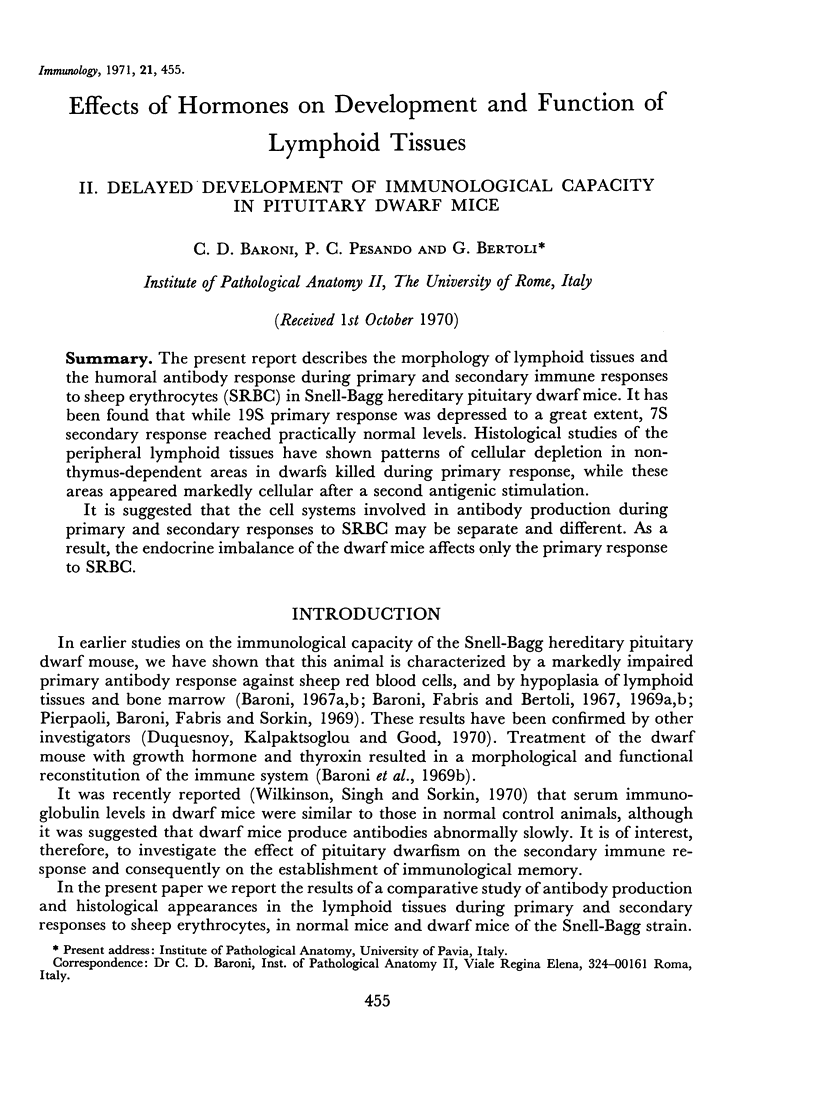
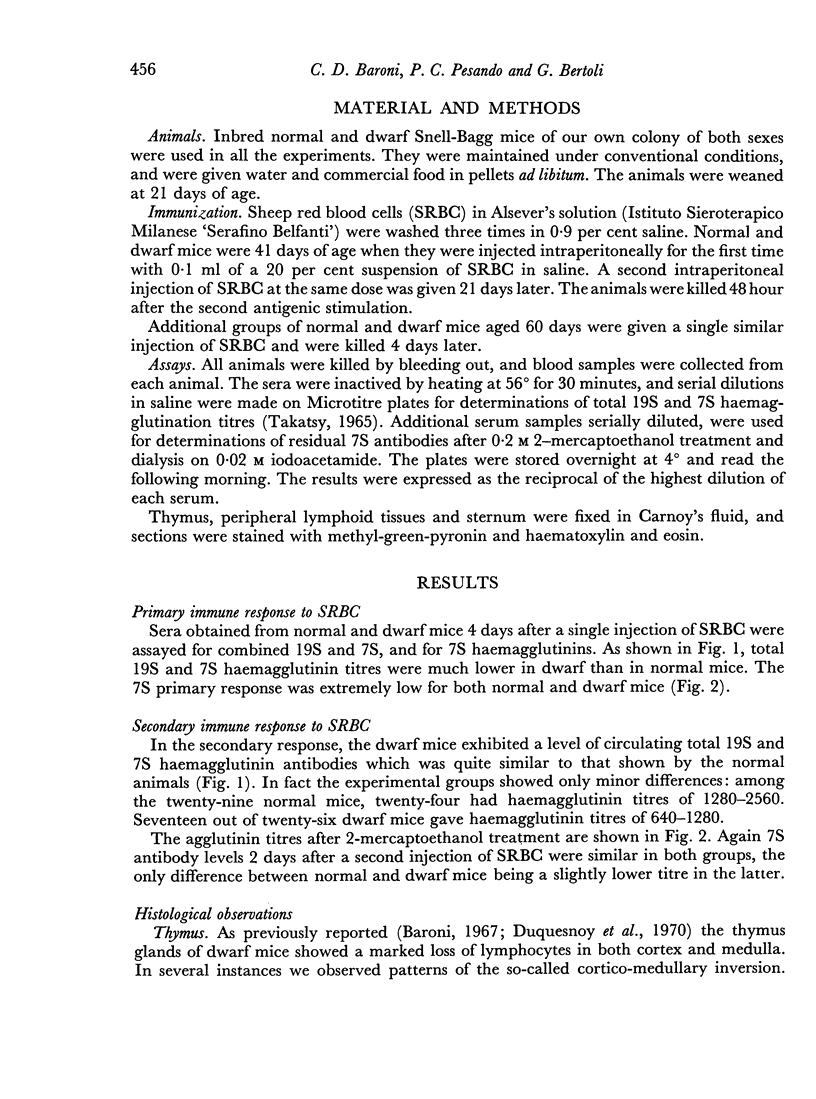
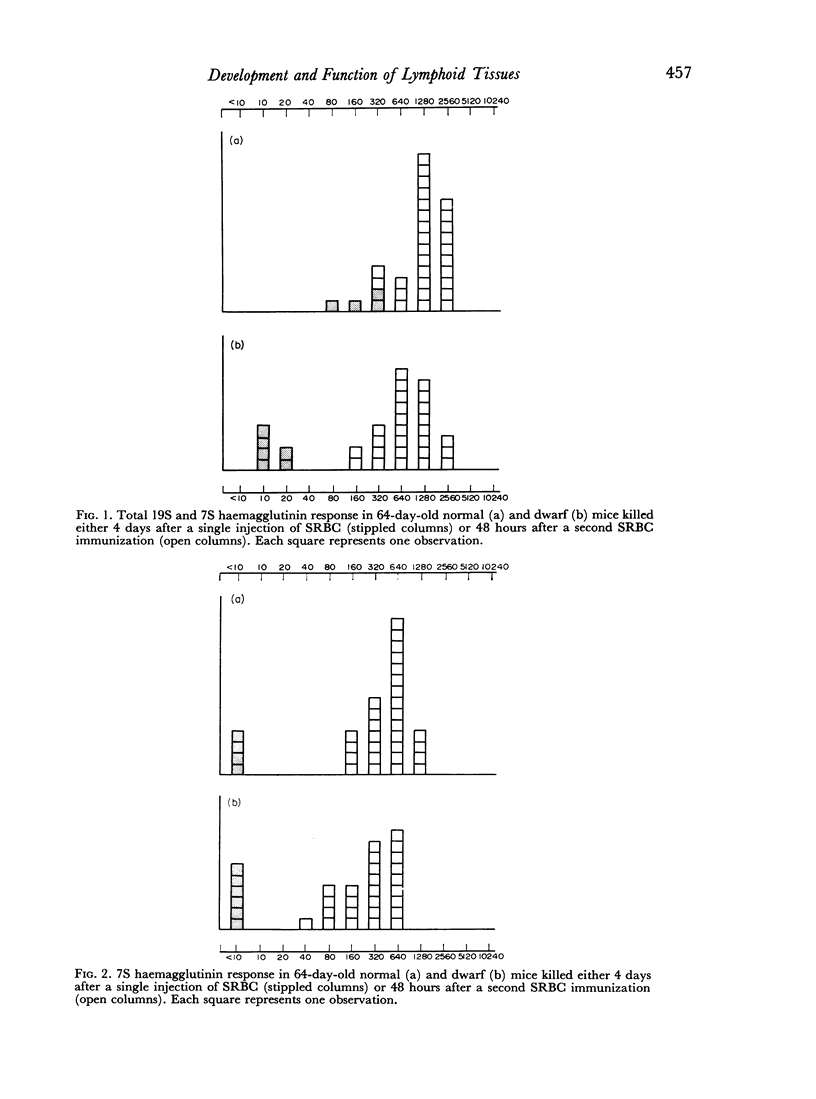
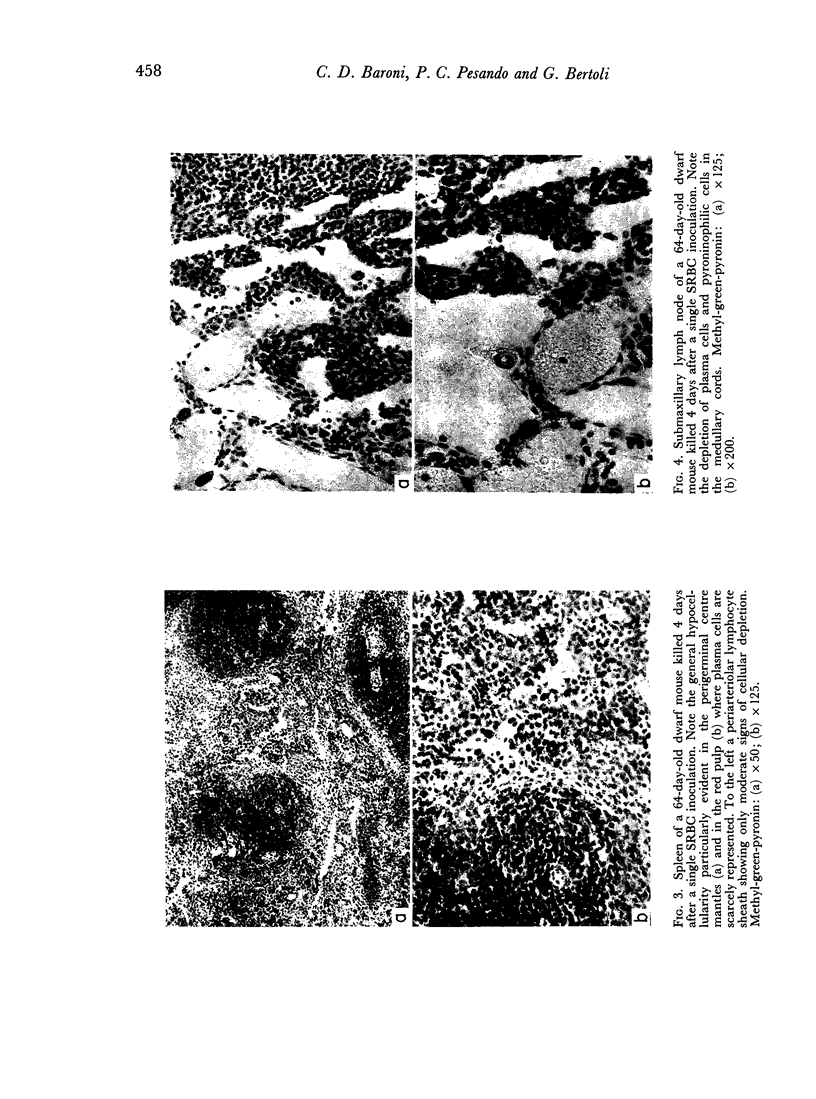
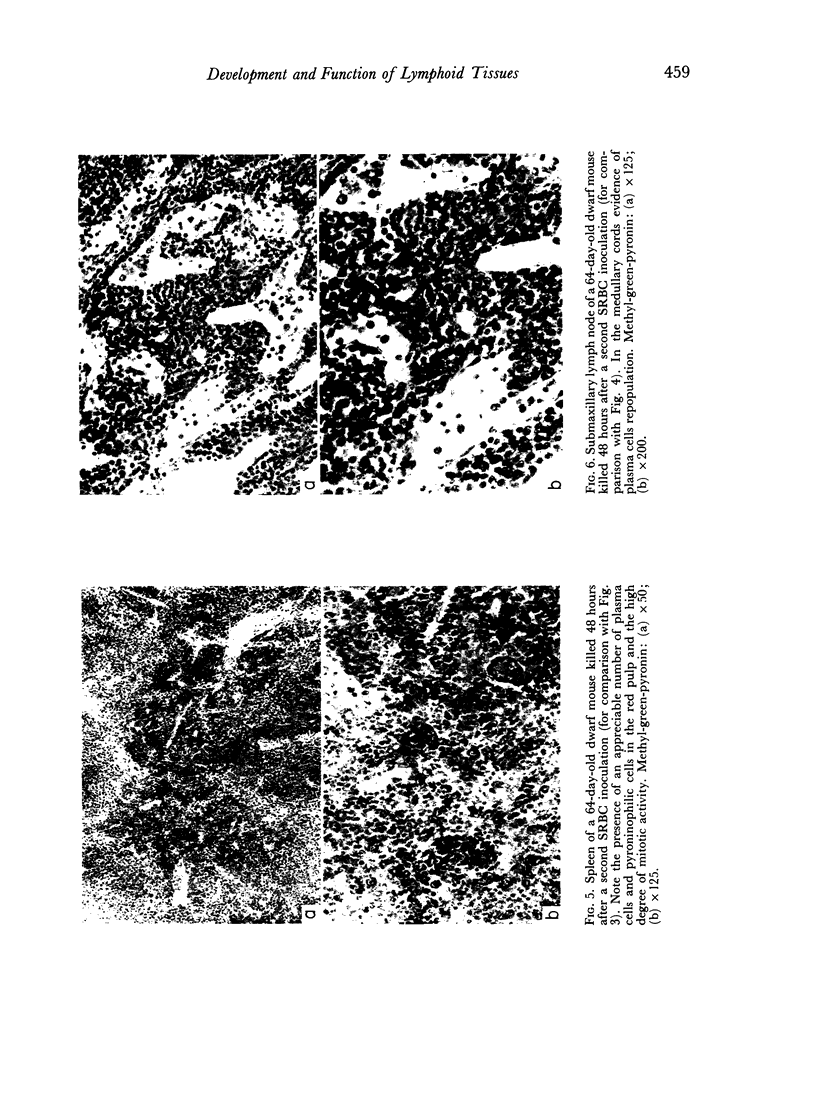
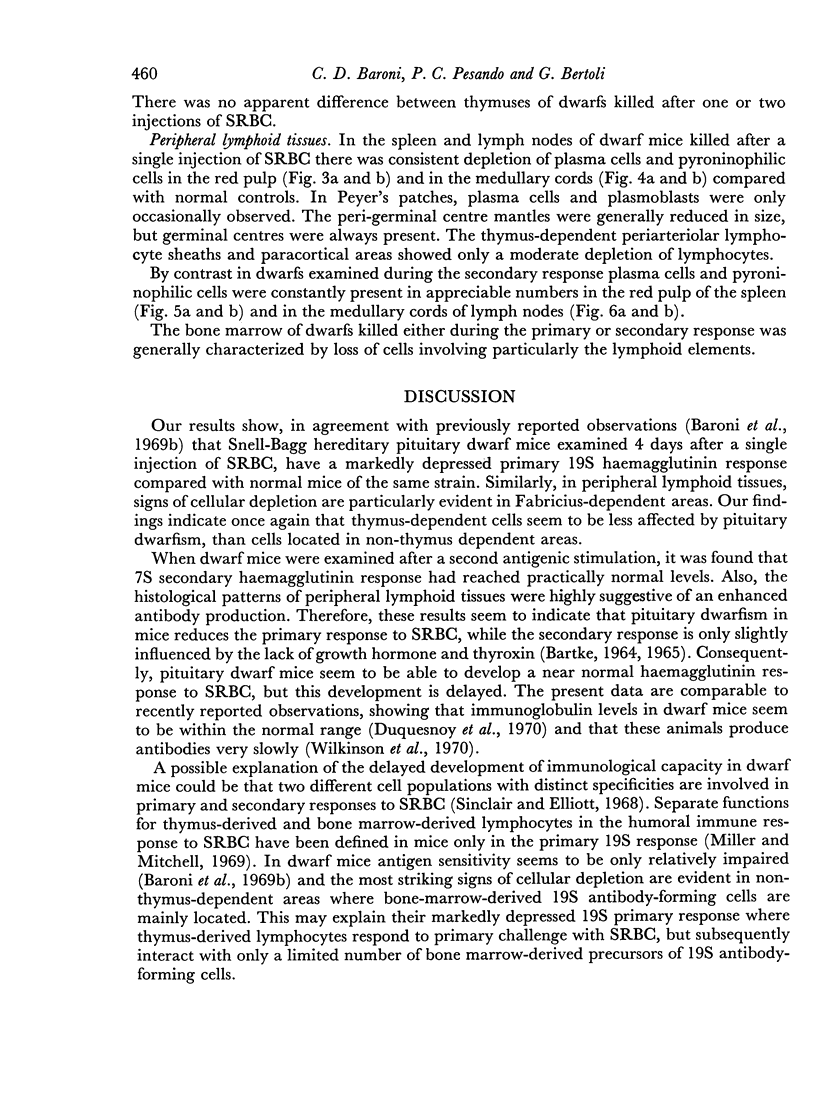
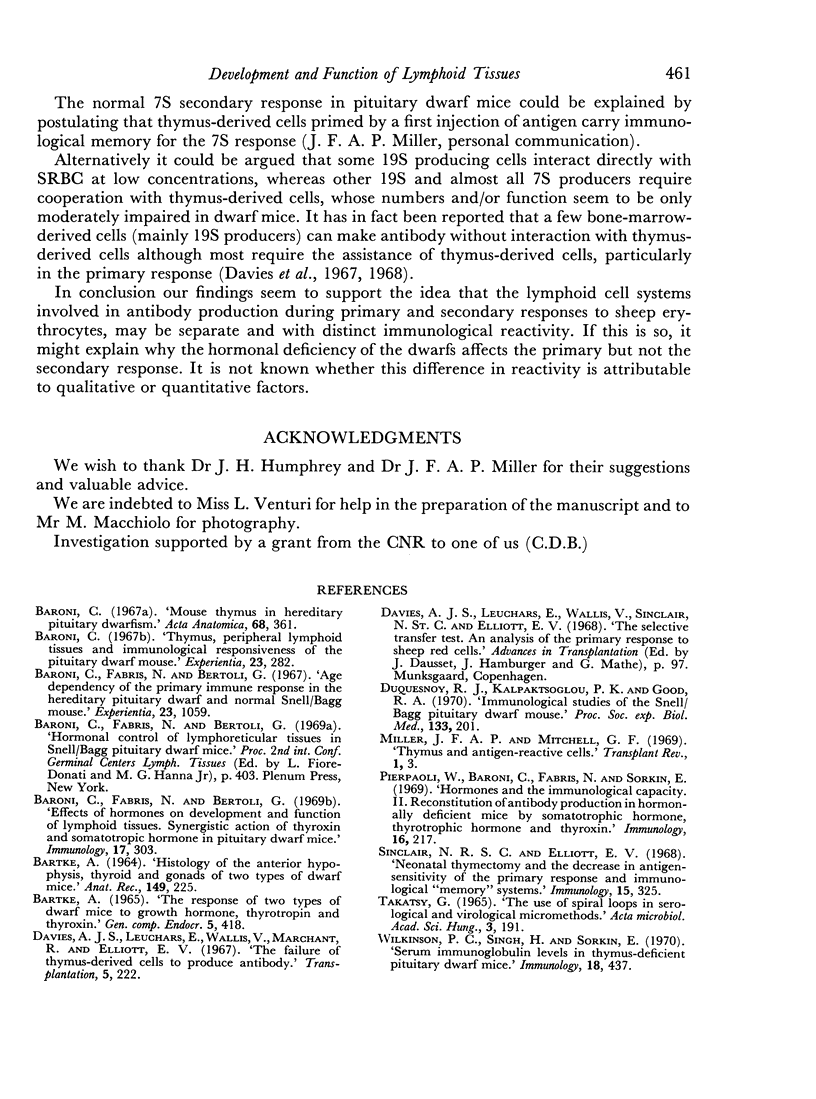
Images in this article
Selected References
These references are in PubMed. This may not be the complete list of references from this article.
- BARTKE A. HISTOLOGY OF THE ANTERIOR HYPOPHYSIS, THYROID AND GONADS OF TWO TYPES OF DWARF MICE. Anat Rec. 1964 Jun;149:225–235. doi: 10.1002/ar.1091490206. [DOI] [PubMed] [Google Scholar]
- Baroni C., Fabris N., Bertoli G. Age dependency of the primary immune response in the hereditary pituitary dwarf and normal Snell-Bagg mouse. Experientia. 1967 Dec 15;23(12):1059–1060. doi: 10.1007/BF02136450. [DOI] [PubMed] [Google Scholar]
- Baroni C. Mouse thymus in hereditary pituitary dwarfism. Acta Anat (Basel) 1967;68(3):361–373. doi: 10.1159/000143040. [DOI] [PubMed] [Google Scholar]
- Baroni C. Thymus, peripheral lymphoid tissues and immunological responsiveness of the pituitary dwarf mouse. Experientia. 1967 Apr 15;23(4):282–283. doi: 10.1007/BF02135688. [DOI] [PubMed] [Google Scholar]
- Bartke A. The response of two types of dwarf mice to growth hormone, thyrotropin, and thyroxine. Gen Comp Endocrinol. 1965 Aug;5(4):418–426. doi: 10.1016/0016-6480(65)90102-4. [DOI] [PubMed] [Google Scholar]
- Duquesnoy R. J., Kalpaktsoglou P. K., Good R. A. Immunological studies of the Snell-Bagg pituitary dwarf mouse. Proc Soc Exp Biol Med. 1970 Jan;133(1):201–206. doi: 10.3181/00379727-133-34440. [DOI] [PubMed] [Google Scholar]
- Miller J. F., Mitchell G. F. Thymus and antigen-reactive cells. Transplant Rev. 1969;1:3–42. doi: 10.1111/j.1600-065x.1969.tb00135.x. [DOI] [PubMed] [Google Scholar]
- Pierpaoli W., Baroni C., Fabris N., Sorkin E. Hormones and immunological capacity. II. Reconstitution of antibody production in hormonally deficient mice by somatotropic hormone, thyrotropic hormone and thyroxin. Immunology. 1969 Feb;16(2):217–230. [PMC free article] [PubMed] [Google Scholar]
- TAKATSY G. The use of spiral loops in serological and virological micro-methods. Acta Microbiol Acad Sci Hung. 1955;3(1-2):191–202. [PubMed] [Google Scholar]
- Wilkinson P. C., Singh H., Sorkin E. Serum immunoglobulin levels in thymus-deficient pituitary dwarf mice. Immunology. 1970 Mar;18(3):437–441. [PMC free article] [PubMed] [Google Scholar]






